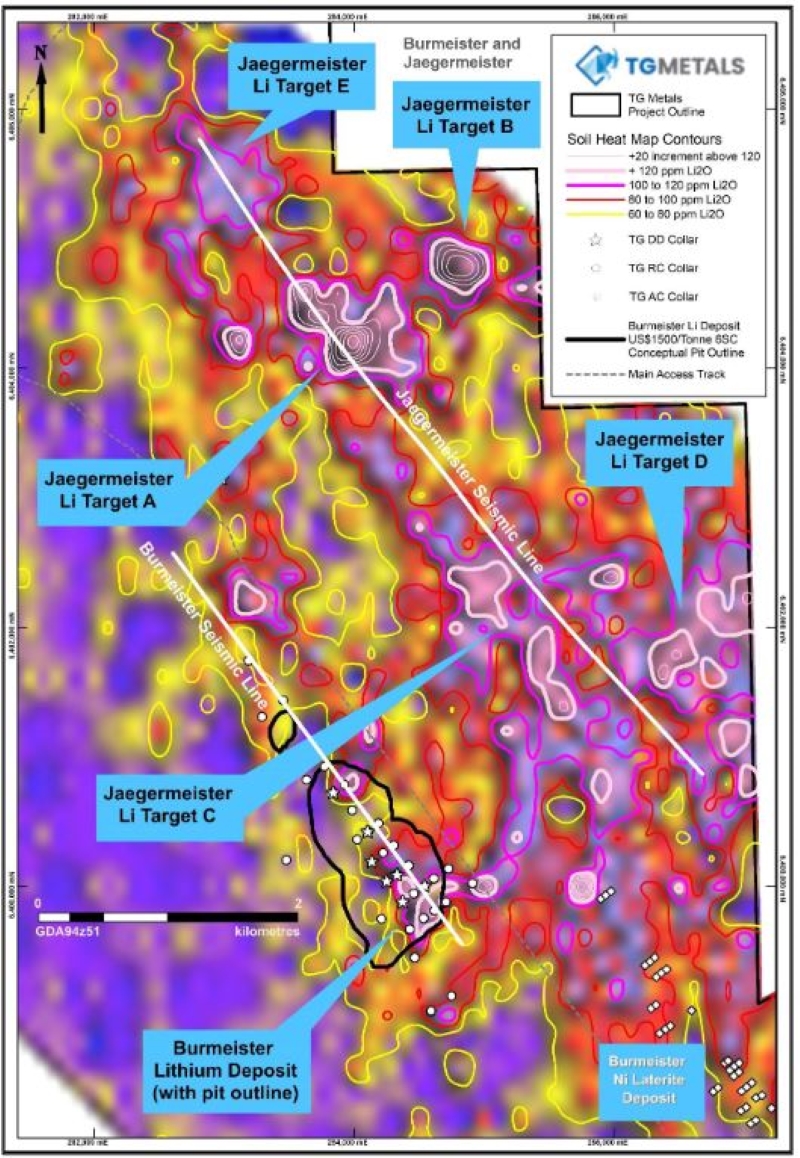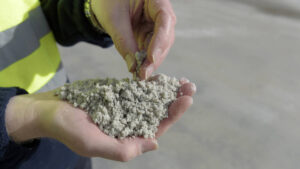TG6 Metals’ David Selfe lights up hard rock lithium and the case for Lake Johnston

WA's hard rock lithium scene is on fire in the Yilgarn once again. Pic via Getty Images.
- Geologist David Selfe says ‘size, grade and depth’ important for hard rock lithium deposits
- WA’s own hard rock lithium scene has a new emerging district in Lake Johnston
- TG6 Metals poised for maiden drilling at regional targets after receiving DEMIRS approval
WA has a new emerging hard rock lithium district at Lake Johnston and juniors are blazing into the region. Which ASX explorers are approaching their projects in the right way, and what does that mean exactly?
Western Australia leads the world in the production of lithium from hard rock sources and Lake Johnston, near Esperance, has the potential to become the State’s newest mining district of the battery metal.
It’s home to its namesake Greenstone Belt – volcanically created geology renowned for containing large quantities of valuable minerals such as copper, nickel gold, lithium, base metals and more.
Lithium itself, from hard rock sources, comes in the form of spodumene-bearing pegmatites – which Lake Johnston has been found to have in abundance.
The region also has nearology to Covalent Lithium’s giant Mt Holland lithium operation (186Mt @ 1.53% Li2O) and Zenith Minerals (ASX:ZNC) Split Rocks project (11.9Mt @ 0.72% Li2O), which gives extra credence to Lake Johnston’s development potential.
So what makes a successful hard rock lithium project?
Speaking to Stockhead, TG Metals (ASX:TG6) MD David Selfe lays down some of his geology nouse and points out what explorers should be looking for when proving up a hard rock lithium resource.
Selfe says the trappings of a good hard rock project initially come down to the size, grade and depth of the deposit.
And importantly, he notes, once you’ve ticked those boxes a deposit needs to be complemented by metallurgical wizardry to bolster a project’s economic metrics and avoid wasting money.
Size, grade and depth
“In terms of endowment, you’d like to prove up about a 20Mt resource before you can say you’ve got a decent-sized project – and you want it as close to surface as possible,” Selfe says.
“In saying that there are lithium deposits that start deeper underground but they come with an added layer of expense.
“Ideally, however, you’d like to find the pegmatites as close together as possible for what we call ‘stacked’ pegmatites, because it reduces your overall strip ratio so you don’t have a large overburden component.”
Selfe says if your lithium is below 1% recovery grades are generally poor.
“Above that, it’s generally accepted that you’re more likely to get a quality spodumene product at the end of the day because that can translate into an industry-standard 6% Li2O concentrate.
“And depth, well you want to know that lithium mineralisation occurs as far down as possible in the early exploration days.
“Just because you may interpret high grades near the surface that doesn’t necessarily mean you’ve got the same further down.
“Astute exploration is required to minimise cost before you start getting the drill out – especially at greenfield projects as you don’t want to get caught out spending lots of money on an uneconomic prospect.”
Metallurgical wizardry pays
Metallurgy – the alchemy of separating valuable minerals from the non-valuable into a saleable concentrate, is increasingly important to widen profit margins.
For explorers, early doors testing of a deposit can gauge the mineral characteristics before committing to project development.
Selfe says it was important that his team started metallurgical test work quite early to see what processes they might be in for at the project going forward.
“We all know about Core Lithium’s (ASX:CXO) processing problems early on and it’s issues like that that we want to avoid.”
Core’s Finiss project in the NT was developed without a necessary flotation method for the processing of ore.
“Most hard rock lithium projects use a DMS separation method to be economical, so it pays to do the homework first.”
Out in front
Since the discovery of Burmeister, juniors have started piling in all around the broader Lake Johnston district and piqued the interest of majors too.
Yet it’s TG6 and nearby Charger Metals (ASX:CHR) with its Medcalf discovery at their respective Lake Johnston projects that are leading the pack, advancing drilling programs after recently receiving program of works approvals for their projects.
Charger’s committing to a 5000m drill campaign surrounding Medcalf’s identified 1.4km-long mineralised strike on the back of inking an exploration farm-in deal with global miner Rio Tinto (ASX:RIO).
That deal could scale up to $42.5m, earning Rio a 75% interest in the project.
RC drilling will also target the Mt Gordon prospect, where exploration uncovered large soil anomalies of >100ppm Li2O that extend for over 3km into TG6’s adjacent Jaegermeister prospect.
TG6 to ramp up drilling
Drilling last year at the Burmeister prospect at Lake Johnston reeled in grades of up to 3.09% Li2O and more recently has defined lithium trends over an 8km strike and delineated five new drill targets – including at its new Jaegermeister prospect.
A program of works was recently approved by the DEMIRS for infill drilling of Burmeister and the maiden drilling of Jaegermeister – which contains multiple soil anomalies larger than the more advanced Burmeister initially presented.
TG6 is ready to boogie, with two RC drilling rigs currently being deployed at Jaegermeister targets A and B.
It has more results to analyse too. After recently completing infill soil sampling at Jaegermeister the explorer has defined a new anomaly – Target E – pushing up the number of high-priority targets to five.

What’s in store
The first stage of metallurgical testwork has been completed and seismic survey results are being analysed to help guide planned drilling and future exploration.
“With such a large area of lithium soil anomalism to drill test, we’re confident that the use of seismic geophysics will fast-track our targeting,” Selfe says.
“We’ve completed two reconnaissance 2D seismic lines; one along the Burmeister trend and a longer one along the Jaegermeister trend.
“If successful, this technique will not only minimise the drilling required for further discovery and resource definition, but it will also provide a very good understanding of the pegmatite system at Lake Johnston and its size potential.
“The discovery cost for Lake Johnston is surprisingly low at the moment – Burmeister has come in at less than $1 per tonne – there’s not many that can say that.”
After a short delay, TG6 is recommencing drilling across the identified targets – the results of which will speak volumes towards future exploration and development of Lake Johnston.
“In particular, the first holes into the priority targets at the Jaegermeister prospect, are greatly anticipated,” Selfe says.
“Further soil sampling has grown and improved the Jaegermeister targets, which contains multiple soil anomalies bigger than the Burmeister lithium deposit initially presented.”
While TG6 Metals is a Stockhead advertiser, it did not sponsor this article.
This article does not constitute financial product advice. You should consider obtaining independent advice before making any financial decisions.
Related Topics

UNLOCK INSIGHTS
Discover the untold stories of emerging ASX stocks.
Daily news and expert analysis, it's free to subscribe.
By proceeding, you confirm you understand that we handle personal information in accordance with our Privacy Policy.








